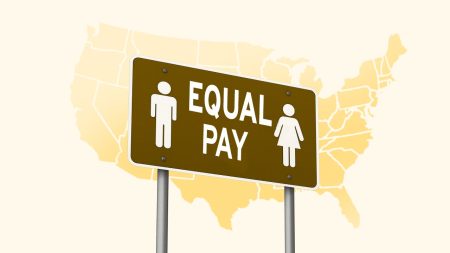Images by Getty Images; Illustration by Austin Courregé/Bankrate
Key takeaways
- Mortgages make up the highest percentage of household debt nationwide, with the average American owing $252,505.
- Millennials have the highest average mortgage debt at $312,014, with Gen X close behind at $283,677.
- The District of Columbia, California and Hawaii have the highest average mortgage balance per borrower.
Collectively, Americans carry trillions in household debt, and mortgages are the biggest burden by far. With home values higher than ever and the U.S. population continuing to grow, the raw total of outstanding mortgages is at record levels.
Still, a mortgage is generally considered “good” debt, and it’s the cheapest way to borrow for many Americans. For those who locked in super-low rates during the pandemic, there’s no real urgency to pay it off, either.
With the high mortgage rate environment of the last few years, however, this type of loan might not be as attractive to some. Understanding the current mortgage debt climate can help you determine when to get a mortgage, or whether to refinance your current one.
Key average mortgage debt insights
|
Average consumer mortgage debt, 2024 |
$252,505 (up 3.3% from 2023) |
|
Number of cities where average mortgage balance exceeds $1 million, 2024 |
47 (more than half of which are in California) |
|
Total household debt, Q1 2025 |
$18.2 trillion (up $167 billion from previous quarter) |
|
Average home equity line of credit (HELOC) balance, 2024 |
$45,157 (up 7.2% from 2023) |
|
Total HELOC debt, 2024 |
$359.9 billion (up 9.7% from 2023) |
|
Total mortgage originations, Q1 2025 |
$426 billion |
|
Average credit score of mortgage borrowers, 2024 |
758 |
|
Average 30-year fixed mortgage rate, 2024 |
6.90% (down from 7.0% in 2023) |
Annual average American mortgage debt
Mortgage debt is the heavyweight when it comes to household debt in the U.S., dwarfing credit card balances, student loans and auto loans.
Average mortgage debt by year
Since 2013, mortgage debt has steadily risen. But since the pandemic, increases in home prices and interest rates have kicked the climb into overdrive.
Average mortgage debt by generation
Americans generally begin taking on debt as young adults, taper off their pace of borrowing in middle age and work to pay off loans near or during retirement.
|
Generation |
Average mortgage balance, Q4 2024 |
|
SOURCE: Experian | |
|
Generation Z (18-27) |
$249,744 |
|
Millennials (28-43) |
$312,014 |
|
Generation X (44-59) |
$283,677 |
|
Baby Boomers (60-78) |
$194,334 |
|
Silent Generation (79+) |
$146,015 |
For each generation, this trend has taken place in tandem with mortgage rate fluctuations and home price appreciation, which has accelerated dramatically in recent years. In March 2020, the median existing-home sale price was $280,700, according to the National Association of Realtors. As of March 2025, the median was $403,700.
States with the highest and lowest mortgage debt
These states had the highest average mortgage balance per borrower as of Q3 2024, according to Experian:
- District of Columbia: $507,584
- California: $445,250
- Hawaii: $409,068
- Washington: $351,622
- Colorado: $342,594
These are the states where borrowers owe the least:
- West Virginia: $132,679
- Ohio: $149,427
- Mississippi: $149,784
- Indiana: $152,712
- Kentucky: $155,649
How mortgage debt compares to other household debt
Mortgage debt makes up the largest portion of household debt. But, because the payments are often spread out over decades, they don’t have as outsize an impact on a household’s monthly budget, especially when compared to higher-interest debt like credit card balances.
That longevity works to borrowers’ advantage in another way: Each monthly payment you make builds your home equity, which can be leveraged over time to help further your financial goals.
Other common types of debt in the U.S.
- Auto loans: Total auto loan debt came to $1.64 trillion as of Q1 2025, a decrease from $1.66 trillion from the previous quarter.
- Credit card debt: Total credit card debt came to $1.18 trillion as of Q1 2025, a $29 billion decrease from the previous quarter.
- Student loans: Total student loan debt came to $1.77 trillion as of Q4 2024, an increase of 2.77% year-over-year.
Mortgage debt and delinquencies
As mortgage debt continues to increase, so too do mortgage delinquencies. According to data from the Mortgage Bankers Association, in the fourth quarter of 2024 the mortgage-loan delinquency rate for residential properties was 3.98 percent, up six basis points from the previous quarter and up 10 basis points year-over-year.
Delinquencies were especially pronounced in the South: The states with the biggest quarterly increases were Florida (99 basis points), South Carolina (59 basis points), North Carolina (40 basis points), Georgia (39 basis points) and Louisiana (32 basis points).
Bottom line
Mortgage loans represent the largest share of household debt in the U.S., far outpacing things like student loans, auto loans and credit card debt. But fortunately, a mortgage loan is generally considered “good” debt, and it allows you to build equity in a valuable asset that appreciates over time. Understanding the debt landscape of homeownership can help you maximize your asset and reach your financial goals.
Read the full article here









